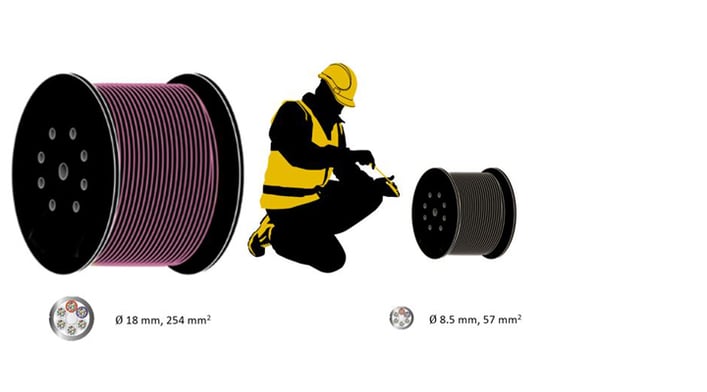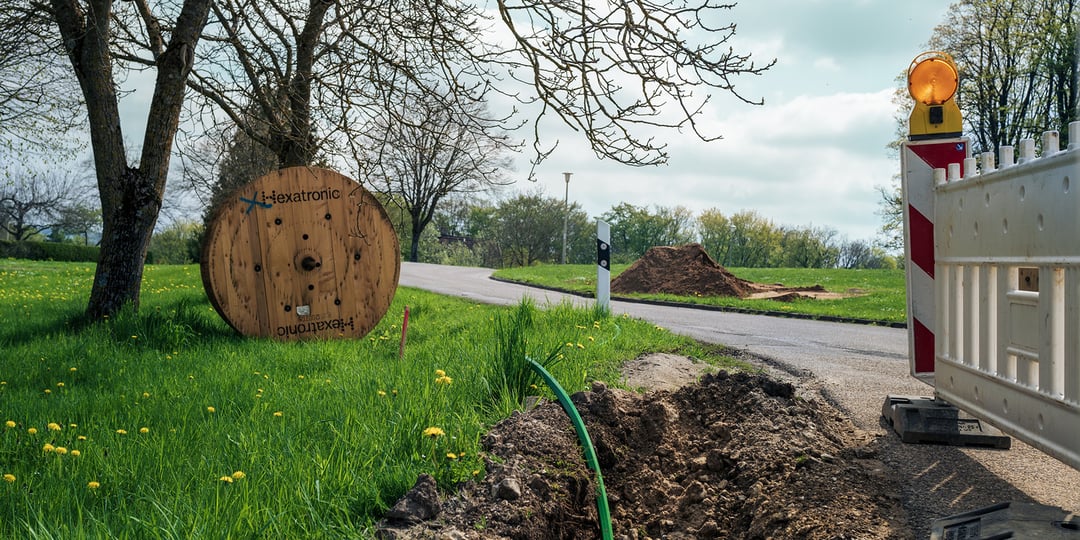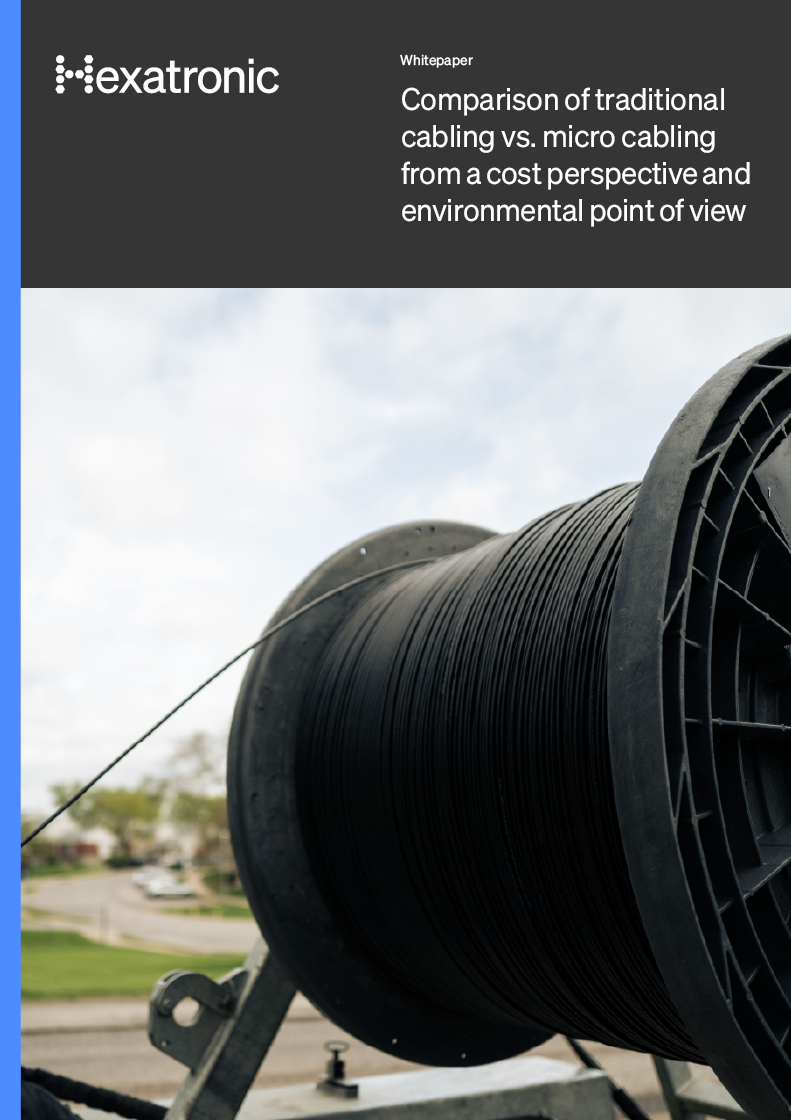The importance of higher bandwidth to homes has been top of mind, especially the last years as parents, students, and workers have struggled to connect remotely due to the new reality imposed by the pandemic. Reliable infrastructure is critical to futureproof continued buildout of FTTx. In this article we compare traditional cabling vs. micro cabling from a total cost of ownership perspective and environmental point of view.
Traditional cabling vs. micro cabling at a glance
Blown fiber micro cabling technology is quickly becoming the preferred system solution for access networks based on bandwidth requirements, speed of deployment, network flexibility, future scalability, and of course, the lowest total cost of ownership. When compared to traditional fiber cabling, micro cabling systems provide a much higher return on investment (ROI) due to reduction in material costs, as well as the overall lower cost in labor capitalized by drastic reduction in installation time. Furthermore, significant reduction of plastic materials consumed in the production of both ducts and cables, as well as volume and weight reduction in transportation, considerably reduces the impact on the environment.
 Comparison of standard duct cable and micro cable.
Comparison of standard duct cable and micro cable.
Micro cabling installation advantages
Multi-way microducts come in a variety of standardized sizes and contain color-coded cells or microducts through which the optical fiber bundles or micro cables are blown. Using couplers, installers connect individual micro cable cells together in tube distribution points, to provide dedicated pathways (routes) through which the fiber cables are blown to achieve a splice-free, point-to-point installation.
A splice-free installation saves installation time and improves overall system reliability. System reliability is further enhanced because no strain is placed on the fiber during the installation process.
Installation cost for any system can be substantial since installing takes time and is labor-intensive. Typically, the cost of materials is a much smaller component of the total installed system cost. So, what is an installation optimized system and what are the advantages?
- Use techniques that eliminate or minimize time consuming splice points.
- Use cables designed for longest possible installation lengths by blowing.
- Use lighter materials (ducts and cables) that facilitate easy handling, faster installation speeds and smaller installation teams, while at the same time lowering the transportation costs for materials as well as work crews.
- Use a system that is easy to upgrade with spare ducts available for future cable installation.
Reduce the carbon footprint
In addition to cost savings, there are substantial environmental benefits realized when using solutions that consume less materials and generate less volume. When comparing a traditional cable with a micro cable, the diameter is normally 2 to 2.5 times larger for a traditional cable.
The total material consumption related to cables and ducts at 4-6 times greater, is directly proportional to a much higher environmental impact. However, this impact is not only related to the manufacturing process and use of raw materials.
Shipping, handling and installation are also a major part of CO2 emissions. The CO2 emissions implicated here are related to fuel consumption incurred during the transportation of cables, ducts or conduits from production facilities to distribution warehouses, to installation sites. This also includes the delivery of raw materials from the suppliers of plastic raw materials to the manufacturing plants.
Comparison with real-world use case examples
In the whitepaper ‘Comparison of traditional cabling vs. micro cabling from a cost perspective and environmental point of view’, we provide detailed examples from real user cases. Read about the different scenarios comparing the impact on total cost of ownership and environmental consequences related to CO2 emissions for traditional cabling vs. micro cabling. Did you know that:
- Installation cost is reduced by 30 to 50% due to more efficient installation in shorter time, and with fewer personnel required when installing micro cabling compared to traditional cabling?
- The material usage for micro cabling is extremely efficient and is 4-6 times lower than traditional? This equals significantly reduced CO2
Find out more and download the whitepaper to read about the different scenarios and best practice guidelines.
This article was originally published in October 2021 and has been updated with minor edits.




